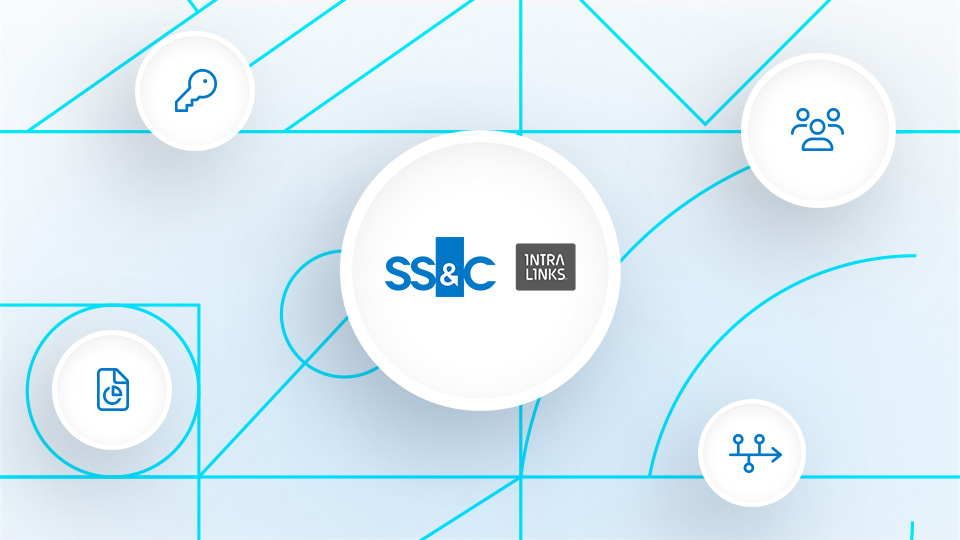U.S. Banking M&A Activity in 2022
In this episode, we explore the outlook for banking M&A in the U.S. Joining host Julie-Anna Needham is Calvin Trice, a financial services reporter for Mergermarket. Dealcast is presented by Mergermarket and SS&C Intralinks.
Listen to learn:
- 2022 outlook vs. reality
- How Russia’s invasion of Ukraine has disrupted equity markets
- The impact of rising interest rates on deal activity in the banking sector
- The size of valuations for banks seeking M&A deals
- The political appetite for M&A deals
Dealmakers, sign up for our monthly INsights newsletter here.
[TRANSCRIPT]
[MUSIC PLAYING] JULIE-ANNA NEEDHAM: Welcome to Dealcast, the weekly M&A podcast presented to you by Mergermarket and SS&C Intralinks. I'm Julie-Anna Needham, a journalist who's been covering M&A for a decade. In this episode, we're exploring the outlook for banking M&A in the U.S. I'm joined by Calvin Trice, financial services reporter for Mergermarket. Hi, Calvin. Thanks very much for joining me today.
CALVIN TRICE: Hello. How are you?
JULIE-ANNA NEEDHAM: Very well. Thank you. So we're looking at bank M&A in 2022. What is the outlook and what's driving that outlook?
CALVIN TRICE: Well, coming into the year, of course, we've had a lot happen since then, but coming into the year, the outlook was looking very good. For the most part probably still is, but the bank stocks have been in great favor and in the equity markets and among investors. So with equity valuations climbing for them and very strong, the outlook was good for deals because the larger banks with their currency is of course their equity values. With equity values high, they were likely to do more deals and still probably are.
So with bank currency strong with equity values, people were people are pretty much looking forward to a big uptick in M&A among banks. Of course, that was going. Coming into the year, we've had the terrible war that's broken out in Ukraine. That's been a major disruptor for all equity markets and everything else in the macro environment. So we'll wait and see, but it was a strong outlook coming into the year.
JULIE-ANNA NEEDHAM: And we'll come onto how the Ukraine might affect deal activity a bit later on in the conversation. But what impact of rising interest rates likely to have on deal activity in the banking sector?
CALVIN TRICE: Well, the immediate impact is that it should strengthen the balance sheets for banks, because with higher interest rates, their profit margins will obviously improve. And that improvement it should still deal activity, it should still deal appetite because their balance need to be strengthened in addition to their equity currencies being strengthened through the equity market favor. So interest rates should also continue to goose the bank M&A.
JULIE-ANNA NEEDHAM: And can we look a bit at the size of deals we're likely to see and what valuations are looking like for those banks seeking deals.
CALVIN TRICE: A lot of activity expected in the mid-tier banks. In the U.S., it's about USD 10 billion to USD 100 billion. A lot activity there. Those banks, their currencies are very strong and there's still a lot of things to catalyze acquisitions there, meaning the smaller banks are approaching thresholds of 1 billion, 5 and 10 billion, which are for scale and deal outlook and especially regulatory concerns and regulatory burdens.
A lot of those banks in that range, if they're not growing should be well, probably be looking for buyers. And banks in that range that are likely or will be looking for deals from smaller banks. We're approaching that threshold.
JULIE-ANNA NEEDHAM: And what kind of valuations are anticipated?
CALVIN TRICE: Well, there was a time when banks could always expect valuations of two times book, but that's becoming increasingly rare. The smaller banks and many of the banks in this mid-tier range, we're probably looking at more like 1.3 times, 1.5 times maybe higher. The higher you go in the asset class, the closer you get to 2 times. But most smaller and mid-tier banks are looking at more like 1.3 to 1.5 times in-- 1.3 or 1.5 times book.
JULIE-ANNA NEEDHAM: And I know that in the US, it's a very regional picture with banking and you've got a lot of regional banks. Can you talk us through the regional bias expected within deal activity in the states that are likely to benefit the most?
CALVIN TRICE: So the advisors I spoke with think the Sun Belt still going to be favored for four deal activity just because they're growing in population and banks like population, they like population growth. So the Sun Belt states will probably still see heightened activity. The Sun Belt states are the ones in the deep South. South of Washington, D.C. and south of the Midwest all the way through California.
The warm states. Warm states will do that -- Several advisors have told me that their regulatory environment for states are also a little bit more lenient there and banks also like that. So those are the Sun Belt states.
And we're expecting probably an uptick in deal activity in Texas because you have a lot of banks. It's a Sun Belt state, warm-weather state. Very favorable state regulatory environment and you have a lot of banks approaching the USD 1 billion to USD 5 billion in asset range. And if they're not growing, those are the types of banks that will be probably looking to seek buyers. Because if they're not growing fast enough, they're not going to be satisfying their investors.
And also Florida, of course, the Sunshine State has seen a lot of consolidation recently to the point where a lot of the regional banks there are pretty much the same size or encroaching on each other's territory. And so they're going to be looking for deals in their neighbor to the North in Georgia, also a Sun Belt state and in the deep South. There's a lot of opportunities there and we've seen some deal activity spillover from Florida into Georgia looking for targets.
JULIE-ANNA NEEDHAM: Great. Thank you. You mentioned it a couple of times already, but looking at regulation, what's the mood music like in Washington or the political appetite for banking deals?
CALVIN TRICE: The appetite for banking deals is OK, but one of the things that could be a fly in the ointment as it were, for the very large deals is that the fact the Biden administration has indicated they're going to be very cool to the deals between very, very large banks. Just the legacy of that financial crisis. Type of similar advisors think that the administration is going to be really be cool to large deals because they're still very much a bias against too much consolidation among the biggest banks.
JULIE-ANNA NEEDHAM: And do you have any examples of potential deals amongst the biggest banks which could be in the pipeline or that have been rumored?
CALVIN TRICE: I haven't heard any rumors of big bank deals recently, but no, I haven't heard of it. Maybe that's why.
JULIE-ANNA NEEDHAM: But the banks that you've mentioned so far, those kinds of mid-tier banks, they're likely to fall under that threshold.
CALVIN TRICE: Yeah. That's right. And then they would comprise most of the deal activity anyway. They would be under the threshold that would get the antenna among the regulators in Washington.
JULIE-ANNA NEEDHAM: So you mentioned it earlier on, but what's the indication about how disruption from geopolitical factors, most notably the Ukraine war might affect deal activity?
CALVIN TRICE: I can tell you this. After I did that article on bank M&A, I talked to an advisor of a company who advises the management of banks and credit unions, and they advise on a lot of things. They're not deal advisors, but they advised on M&A integration and we can't tell you if it's because of the macro environment, but they have this CEO of a company called Cornerstone Advisors did say they weren't seeing as many bank deals they were expecting. They were also expecting a big uptick in bank deals and they have actually dealt with a couple of them.
But they thought bank deals were a little bit cooler than they expected. So it's a wait-and-see environment as with everything else when you have these huge macroeconomic disruptions. But the fallout won't be known maybe for weeks or months. But that's one indication I've gotten that maybe things have cooled.
JULIE-ANNA NEEDHAM: Yeah. And obviously, you were a lot further away from it than where we are, here in the UK, but there seems to be a massive knock-on impact and in so many areas of our life, particularly with the rising energy costs. Obviously, the U.S. has got a very different energy landscape to Europe, but it's contributing to a cost of living crisis, rising inflation, and an expected kind of continued rise of interest rates during the rest of this year.
CALVIN TRICE: Yeah. And then that was on tap anyway because the Fed indicated they were going to raise interest rates to cool the economy anyways. It has a double-edged sword effect on banks because their deposit costs, their deposit business will tend to suffer a bit from that because investors can get returns from elsewhere when interest rates rise.
But banks, for example, banks that have less deposit business and have more regular banking business, they'll be among the banks will be favored in M&A I'm told. Another wait-and-see things. And it also depends on what the balance of business the individual banks are doing.
[MUSIC PLAYING]
JULIE-ANNA NEEDHAM: Great. All right. Calvin, thanks very much. That was Calvin Trice, financial services reporter for Mergermarket. Thanks for listening to this week's episode of Dealcast presented by Mergermarket and SS&C Intralinks. Please rate, review and follow the podcast.
You can find us on Apple podcasts, Spotify, or look out for your Mergermarket news alert. For more information, check out our show notes. Join us next week for another episode.




